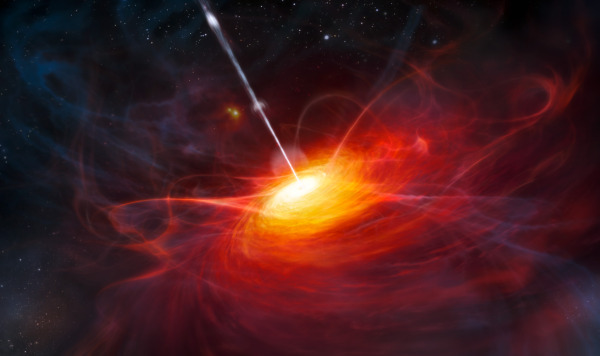Astronomers Discover The Largest Structure In The Universe

An international team of astronomers, led by academics from the University of Central Lancashire has found "the largest known structure in the universe." To put its size into perspective, it would take 4 billion years for a vehicle travelling at the speed of light just to cross it.
This large quasar group, a structured collection of stars and supermassive black holes, dwarves the 'expected' size of 200 Megaparsecs (3.83470232 × 1021 miles), by measuring in closer to 1200 Mpc at its widest point (2.30082139 × 1022 miles). To again put these mindblowing numbers into context, the Milky Way measures 0.03 Mpc in diameter.
"While it is difficult to fathom the scale of this LQG, we can say quite definitely it is the largest structure ever seen in the entire universe. This is hugely exciting – not least because it runs counter to our current understanding of the scale of the universe." Dr. Roger Clowes, academic of UCLan's Jeremiah Horrocks Institute said.
This discovery may also challenge an Einstein-derived piece of cosmological study also. The assumption of this cosmological principle is that "the universe, when viewed at a sufficiently large scale, looks the same no matter where you are observing it from." With that in mind, the largest theoretical size of a structure is 370 Mpc, meaning this particular large quasar group, with the typical size of 500 Mpc (the aforementioned 1200 Mpc is the cluster size at its largest point), they bring a significant challenge to the theory.
"Our team has been looking at similar cases which add further weight to this challenge and we will be continuing to investigate these fascinating phenomena." Dr. Clowes concluded.
Source: Royal Astronomical Society
Jason England

